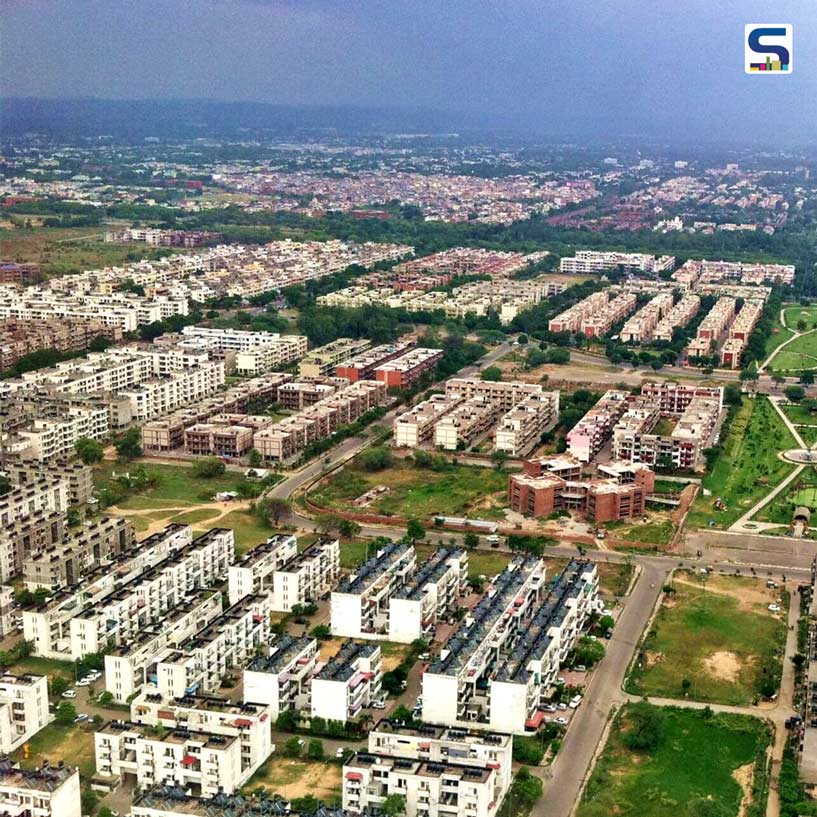
Chandigarh- A Well-Planned City in India
While addressing a post-Budget webinar on the subject of urban development on Wednesday, Prime Minister Narendra Modi stressed the need for well-planned cities in India. He said that the position of India in the world would have been completely different if 75 planned cities had been developed in our 75 years of Independence. SURFACES REPORTER (SR) delves deeper into the statement made by the PM and presents you with detailed info. Scroll down to read:
In the sixth of the series of 12 webinars that are being organised by the government, Modi said that Urban planning is the need of the hour in the fast-paced environment of India in the 21st century. The main aim behind hosting these webinars is to seek ideas and suggestions for the implementation of budgetary announce ements.
The Union Budget for 2023-2024 presented by Finance Minister Nirmala Sitharaman in Parliament on February 1 included the announcement of an Urban Infrastructure Development Fund of Rs 10,000 crore annually for infrastructure in Tier-2 and Tier-3 cities.
Union Minister for Housing and Urban Affairs- Hardeep Puri, Environment Minister- Bhupender Yadav, Social Justice Minister- Virendra Kumar and Jal Shakti Minister- Gajendra Shekhawat, were involved in the virtual gathering.
Well-Planned Cities Developed in The Past 75 Years
The prime concern of Prime Minister Modi is that only a few planned cities were developed in the nation after independence. Jaipur was the first well-planned city, established in 1727, while Chandigarh is said to be India's best-planned city, with an outstanding and expansive system in place.
.png)
Aerial view of Jaipur- India's first planned city
Apart from them, Gandhinagar in Gujarat, Jamshedpur in Jharkhand, Rajarhat in West Bengal, Navi Mumbai in Maharashtra, Madurai in Tamil Nadu and Noida in Uttar Pradesh are a few well-planned cities in India.
Urban Planning Will Determine The Fate of India
“Urban planning will determine the fate of our cities in Amrit kaal ( the period from 75- 100 years) and it is only well-planned cities that will determine the fate of India,” Modi said. Why does Narendra Modi say so? For this, we have to go to India’s history.
During British rule in India, only Mumbai, Kolkata, Chennai and a few cities developed while a major part of India was rural and migrations to cities were also rare.
When India got freedom in 1947, the prime goal of the government was to provide “roti, kapda and makaan”, which was indeed the right approach as the majority of Indians were living in extreme poverty and were primitively agrarian. Most policies were for the improvement of the agricultural sector revolving around villages, farmers, etc.
While at the same time, countries like Japan, China, Taiwan, Singapore, South Korea, started centralizing on rapid urbanization in the 1950s, 1960s and 1970s and thereby paving the way for well-planned megacities.
In the 1970s, India became self-sufficient in food production. At that time rapid rural-to-urban migration took place, which led to the speedy growth of slums and illegal housing. Further, poverty, economic stagnation and depression, high unemployment, informal economy, poor planning, politics and natural disasters have also created a huge socio-economic and environmental impact on the cities.
When the state governments understood the significance of urban planning, it was already late. As the slums started popping up everywhere in the cities, which has made the process of land acquisition also very challenging. Even, initially, plans for creating well–managed cities were made but eventually they made the cities more blown up, chaotic with no focus on hygiene, traffic management and public infrastructure.
So, it seems correct when Modi says, ‘Poor planning of cities or implementation of plans may lead to huge challenges in the development of the country.’
Solution
To find an effective solution for this, the prime minister asks urban planners and urban govt experts to suggest innovative ideas for new cities planning and the modernisation of existing ones. He asked them to focus on three questions—' how to improve states’ urban planning ecosystem, how to use the expertise available in the private sector, and how to develop centres of excellence for urban planning.’ He also suggested the participants to work with start-ups in the sector.
He said the circular economy would be the basis of urban development, with large quantities of batteries, electronics, automobile parts and tyres being discarded along with municipal solid waste every day. He further added that the country’s waste processing had increased from 14 to 15 per cent of the waste created daily in 2014 to 75 per cent now. If this had been done earlier, the outskirts of India’s cities would not be homes to mountains of garbage.
According to him, 'The plans and policies that the government is making to create garbage-free, water-secure and climate-resilient cities will not only make life easier for the people of the cities but also help in their own development.’
SURFACES REPORTER appreciates the government’s mission of reforming urban planning capacity in India. We really hope that the innovative and feasible ideas that architects, urban planners and think tanks of the country would come up with will resolve present-day habitat problems and upgrade people’s living conditions in India.
Keep reading SURFACES REPORTER for more such articles and stories.
Join us in SOCIAL MEDIA to stay updated
SR FACEBOOK | SR LINKEDIN | SR INSTAGRAM | SR YOUTUBE
Further, Subscribe to our magazine | Sign Up for the FREE Surfaces Reporter Magazine Newsletter
Also, check out Surfaces Reporter’s encouraging, exciting and educational WEBINARS here.
You may also like to read about:
Budget 2023-24: Reactions from Corporate and Real Estate Experts
Architect Deepankar Sharma Suggests Ways To Enhance The Living Environment For the Residents at Kumbharwada | Dharavi | Mumbai
Know All About Long-Awaited Dharavi Redevelopment Project | Adani Group Wins The Bid
And more…